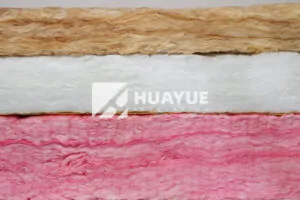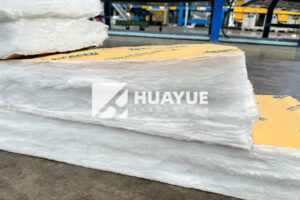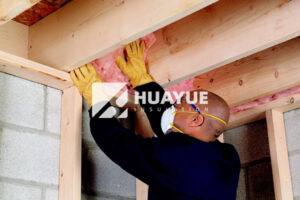What is the Best R-Value for Wall Insulation?
Choosing the right R-value feels complicated. Pick wrong, and you waste money on energy bills or materials. Here’s how to get it just right for your project.
The best R-value for exterior walls is typically between R-13 and R-21. It depends on your local climate and wall construction. For 2×4 walls, R-13 or R-15 is standard. For 2×6 walls, R-19 or R-21 is recommended for better energy efficiency.
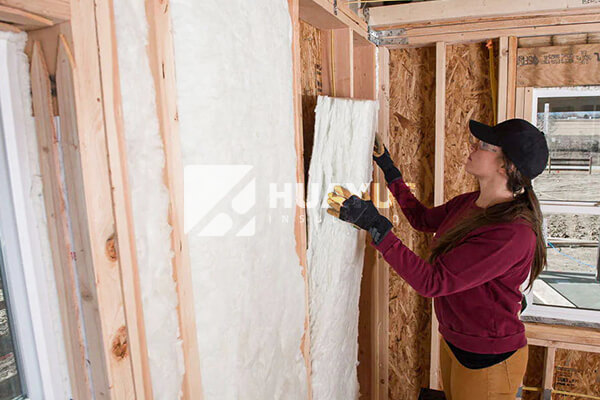
That’s the quick answer, but "best" isn’t a single number. It’s a balance of building codes, your climate, and your budget. As a manufacturer who has supplied insulation for projects for over 30 years, from the freezing north to hot southern regions, I’ve learned that the right choice saves you money and headaches for decades. The question isn’t just "what R-value," but "what R-value for my wall in my location." Let’s dig into the details to find the perfect R-value for your specific project.
How do climate zones affect the R-value you need?
Live in a very hot or cold place? Using a generic R-value can lead to uncomfortable rooms and sky-high energy bills. Let’s match your insulation to your weather.
Your climate zone is the most important factor. Colder climates need higher R-values, typically R-20 or more, to keep heat in. Warmer climates can use lower R-values, like R-13, primarily to keep heat out.
Governments and energy organizations create climate zone maps for a reason. They tell you how much insulation you need to be comfortable and energy-efficient. Heat naturally moves from a warm area to a cold one. In the winter, you’re trying to stop the expensive heat inside your house from escaping into the cold outdoors. In the summer, you’re doing the opposite. You’re stopping the sun’s intense heat from getting inside and making your air conditioner work overtime. The bigger the temperature difference between inside and outside, the harder your insulation has to work, and the more R-value you need. I remember a project in a very cold part of Europe where the client chose R-21 rock wool. It cost a bit more upfront, but his heating costs were much lower than his neighbors’. The extra R-value paid for itself quickly.
Recommended R-Values by Climate Zone
| Climate Zone (U.S. DOE) | Example City | Recommended Wall R-Value | Primary Goal |
|---|---|---|---|
| 1-2 (Hot) | Miami, FL | R-13 | Block intense summer heat |
| 3-4 (Mixed) | Atlanta, GA | R-13 to R-15 | Balance heating and cooling |
| 5-6 (Cold) | Chicago, IL | R-20 or R-13 + R-5ci* | Prevent major winter heat loss |
| 7-8 (Very Cold) | Minneapolis, MN | R-20 + R-5ci* or R-21 | Maximize heat retention |
*ci stands for continuous insulation, like rigid foam, installed on the exterior of the studs.
What’s the difference between insulating 2×4 and 2×6 walls?
You have 2×4 walls but see recommendations for R-21 insulation. How does that even fit? Forcing it in can actually hurt performance and waste your money.
The depth of your wall cavity determines the maximum R-value you can install without compression. A 2×4 wall is 3.5 inches deep and fits R-13 or R-15. A 2×6 wall is 5.5 inches deep and fits R-19 or R-21 insulation.
This is one of the most fundamental rules of insulation, and it’s where a lot of people make a costly mistake. Insulation like fiberglass and rock wool works because of the tiny air pockets trapped within the fibers. These pockets are what slow down the movement of heat. If you buy a thick R-21 batt designed for a 5.5-inch-deep 2×6 wall and cram it into a 3.5-inch-deep 2×4 wall, you crush all those important air pockets. You’re squeezing the life, and the performance, right out of it. An R-21 batt compressed this way might only give you an R-value of R-13, but you paid the higher price for R-21. You get no extra benefit and just waste money. It’s critical to match the insulation’s thickness to the space you have.
Matching Insulation to Wall Depth
| Wall Framing | Actual Cavity Depth | Standard Batt Insulation | Maximum R-Value (from batt) |
|---|---|---|---|
| 2×4 Studs | 3.5 inches | R-13 or R-15 | R-15 |
| 2×6 Studs | 5.5 inches | R-19, R-20, or R-21 | R-21 |
Always measure your wall depth and buy the insulation that is designed to fit. It will perform better and save you from a costly error.
Does the type of insulation material change the R-value needed?
Fiberglass, rock wool, foam… the choices are overwhelming. Does picking a different material mean you need a different R-value? Understanding this helps you choose the best overall product.
No, the required R-value for your wall doesn’t change with the material. An R-13 wall needs to perform at R-13. However, different materials achieve R-values differently and offer other benefits like soundproofing or fire resistance.
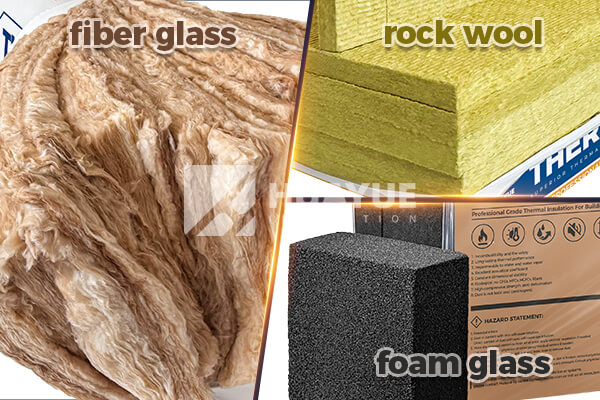
An R-value is just a number that measures resistance to heat flow. A building code that calls for R-20 doesn’t care if you use glass wool, rock wool, or something else, as long as the final wall assembly achieves that R-20 rating. As a manufacturer of different insulation types, I help customers choose based on the total picture. My client, Hans, a German plant engineer, uses our rock wool in his facilities not just for its R-value, but for its excellent fire resistance and sound-dampening qualities between noisy machine rooms and quiet offices. For the bases of his cryogenic tanks, he chooses foam glass for its incredible compressive strength and because it won’t absorb moisture. The "best" choice is about more than just one number. You have to consider what other jobs you need the insulation to do.
Comparing Common Insulation Materials
| Insulation Type | Typical R-Value (per inch) | Key Benefit Beyond R-Value |
|---|---|---|
| Glass Wool | R-3.1 to R-4.3 | Cost-effective and widely available |
| Rock Wool | R-3.3 to R-4.0 | Superior fire resistance, soundproofing |
| Foam Glass | R-3.4 | Impermeable, high compressive strength |
| Spray Foam (Closed-Cell) | R-6.0 to R-7.0 | Creates an air seal, adds rigidity |
Your R-value target is fixed by your climate and wall type. Your material choice depends on your budget and what other performance features are important for your project.
Conclusion
To find the best R-value, match it to your climate zone and wall depth. Consider material benefits like fire safety, but never compress insulation. This ensures optimal performance and savings.
You may also be interested in:
Ready to Get Started?
Get in touch with our experts for personalized solutions tailored to your needs.
Get Free QuoteLatest Articles

Eco Batt Insulation: What You Need to Know?
Dec 12, 2025
Let's Work Together
Ready to take your business to the next level? Get in touch with our team of experts and let's discuss how we can help you achieve your goals.
Get Free Solutions
